-
 Bitcoin
Bitcoin $106,048.4041
1.57% -
 Ethereum
Ethereum $2,618.5444
2.71% -
 Tether USDt
Tether USDt $1.0004
0.01% -
 XRP
XRP $2.2597
4.02% -
 BNB
BNB $664.1657
0.53% -
 Solana
Solana $160.5286
4.06% -
 USDC
USDC $0.9997
-0.02% -
 Dogecoin
Dogecoin $0.1959
1.84% -
 TRON
TRON $0.2712
1.43% -
 Cardano
Cardano $0.6880
1.62% -
 Hyperliquid
Hyperliquid $36.7826
5.89% -
 Sui
Sui $3.2928
-0.43% -
 Chainlink
Chainlink $14.2807
3.43% -
 Avalanche
Avalanche $21.4319
3.56% -
 Stellar
Stellar $0.2751
3.22% -
 UNUS SED LEO
UNUS SED LEO $8.8299
3.50% -
 Bitcoin Cash
Bitcoin Cash $405.2140
1.18% -
 Toncoin
Toncoin $3.2104
-1.23% -
 Shiba Inu
Shiba Inu $0.0...01316
1.70% -
 Hedera
Hedera $0.1742
3.06% -
 Litecoin
Litecoin $89.9955
1.11% -
 Polkadot
Polkadot $4.1768
3.13% -
 Monero
Monero $346.1703
-4.21% -
 Ethena USDe
Ethena USDe $1.0012
0.01% -
 Bitget Token
Bitget Token $4.8221
2.45% -
 Dai
Dai $1.0000
-0.01% -
 Pepe
Pepe $0.0...01262
6.02% -
 Pi
Pi $0.6534
1.56% -
 Uniswap
Uniswap $6.6528
5.79% -
 Aave
Aave $268.6495
6.45%
How to calculate the handling fee of Coinbase contract? What are the differences between different levels of fees?
Coinbase contract handling fees vary based on trading volume, transaction type, and payment method; understanding these can help minimize costs.
Apr 28, 2025 at 11:00 am
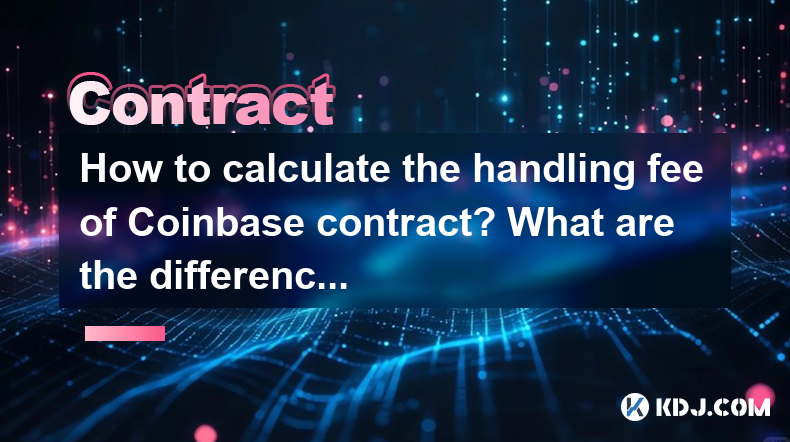
Introduction to Coinbase Contract Handling Fees
When trading on Coinbase, understanding the handling fees associated with the Coinbase contract is crucial for optimizing your trading strategy. Handling fees are charges applied to each transaction executed on the platform, and they vary based on different factors such as the type of transaction and the user's trading volume. This article will delve into how to calculate these fees and explore the differences between various fee levels, ensuring you have a comprehensive understanding of what to expect when using Coinbase.
What are Coinbase Contract Handling Fees?
Coinbase contract handling fees refer to the costs incurred when you execute trades, withdraw funds, or engage in other activities on the platform. These fees are essential for the operation of the exchange, covering costs such as transaction processing, security, and customer support. The fees are typically a percentage of the transaction amount and can vary based on the user's trading activity and the type of transaction being performed.
Factors Influencing Coinbase Contract Handling Fees
Several factors determine the handling fees on Coinbase, including:
- Trading Volume: Users who trade larger volumes often benefit from lower fees due to tiered fee structures.
- Transaction Type: Different types of transactions, such as buying, selling, or transferring cryptocurrencies, may have different fee rates.
- Payment Method: The method used to fund your account, such as bank transfers or credit cards, can also impact the fees you pay.
Understanding these factors is vital for accurately calculating and minimizing the fees you incur on Coinbase.
How to Calculate Coinbase Contract Handling Fees
Calculating the handling fees on Coinbase involves understanding the fee structure and applying it to your specific transactions. Here’s a step-by-step guide on how to do this:
- Identify the Transaction Type: Determine whether you are buying, selling, or transferring cryptocurrencies, as each type has a different fee structure.
- Check Your Trading Volume: Log into your Coinbase account and review your trading volume over the past 30 days. This information is crucial for determining your fee tier.
- Apply the Fee Rate: Use the fee rate applicable to your transaction type and trading volume to calculate the fee. For example, if you are buying Bitcoin with a trading volume that places you in the "Maker" fee tier, you would apply the corresponding maker fee rate to your transaction amount.
To illustrate, let’s say you are buying $1,000 worth of Bitcoin and your trading volume places you in the 0.50% maker fee tier. The handling fee would be calculated as follows:
[ \text{Handling Fee} = \text{Transaction Amount} \times \text{Fee Rate} ]
[ \text{Handling Fee} = $1,000 \times 0.50\% = $5 ]
Differences Between Different Levels of Fees
Coinbase offers different fee levels based on the user's trading activity, which can significantly impact the costs associated with using the platform. Here’s a detailed look at the differences between these levels:
- Taker Fees vs. Maker Fees: Coinbase uses a maker-taker fee model. Taker fees are charged when you take liquidity from the order book, typically when you place a market order. Maker fees are charged when you add liquidity to the order book, usually when you place a limit order. Taker fees are generally higher than maker fees.
- Volume-Based Tiers: Coinbase categorizes users into different volume-based tiers, with higher trading volumes resulting in lower fees. For example, a user with a 30-day trading volume of less than $10,000 might be in the highest fee tier, while a user with a volume over $50 million could be in the lowest fee tier.
- Coinbase Pro vs. Coinbase: Coinbase Pro, designed for more advanced traders, typically offers lower fees compared to the standard Coinbase platform. For instance, while Coinbase might charge a 0.50% fee for a transaction, Coinbase Pro might charge only 0.10% for the same transaction.
Understanding these differences allows you to choose the most cost-effective way to trade on Coinbase.
How to Minimize Coinbase Contract Handling Fees
Minimizing the handling fees on Coinbase involves strategic planning and understanding the platform's fee structure. Here are some strategies to help you reduce your fees:
- Increase Trading Volume: By increasing your trading volume, you can move to a lower fee tier, which results in reduced fees for your transactions.
- Use Coinbase Pro: If you are an active trader, using Coinbase Pro can significantly reduce your fees due to its lower fee structure.
- Opt for Limit Orders: Placing limit orders instead of market orders can help you avoid taker fees and benefit from lower maker fees.
- Consider Payment Methods: Some payment methods, such as bank transfers, often have lower fees compared to credit card transactions.
Implementing these strategies can help you save on handling fees and maximize your trading efficiency on Coinbase.
Frequently Asked Questions
Q: Can I negotiate handling fees with Coinbase?
A: Coinbase does not offer fee negotiation for individual users. The fee structure is standardized and based on trading volume and transaction type. However, by increasing your trading volume, you can move to a lower fee tier, effectively reducing your fees.
Q: Are there any hidden fees on Coinbase?
A: Coinbase is transparent about its fee structure, and there are no hidden fees. All fees, including handling fees, are clearly outlined in the fee schedule available on their website. It’s important to review this schedule to understand the costs associated with your transactions.
Q: How often does Coinbase update its fee structure?
A: Coinbase periodically reviews and updates its fee structure to reflect changes in market conditions and platform operations. Users are typically notified of any changes through email or platform announcements. It’s a good practice to check the fee schedule regularly to stay informed about any updates.
Q: Does Coinbase offer any fee waivers or discounts?
A: Coinbase occasionally offers promotions or discounts on fees, especially for new users or during special events. These promotions are usually time-limited and can help reduce the cost of trading. Keep an eye on Coinbase’s official communications to take advantage of any available fee waivers or discounts.
Disclaimer:info@kdj.com
The information provided is not trading advice. kdj.com does not assume any responsibility for any investments made based on the information provided in this article. Cryptocurrencies are highly volatile and it is highly recommended that you invest with caution after thorough research!
If you believe that the content used on this website infringes your copyright, please contact us immediately (info@kdj.com) and we will delete it promptly.
- Pi Network (PI) price retreats by over 13% after the Core Team launches a $100 million ecosystem fund.
- 2025-06-04 03:45:14
- World Liberty Financial, the Firm That Purports to Focus on “Decentralized Finance” and Has Been Endorsed and Embraced by the Trump Family, Has Invested in a Variety of Cryptocurrency Assets in Its Portfolio.
- 2025-06-04 03:45:14
- Memetoken Dogen (DOGE) Promises 1000x Returns as Major Cryptocurrency Investors Redirect Their Attention
- 2025-06-04 03:40:13
- First Michael Saylor Hoarded Bitcoin. Then, an Army of Copycats Mimicked the Play
- 2025-06-04 03:40:13
- Solana (SOL) Price Surges 25% as TVL Overtakes Ethereum Layer-2s, Solaxy (SOLX) Layer-2 Scaling Solution Emerges
- 2025-06-04 03:35:13
- Coinbase Collected Face Scans of Users Without Consent, Violating Illinois Biometric Information Privacy Act, New Class-Action Alleges
- 2025-06-04 03:35:13
Related knowledge
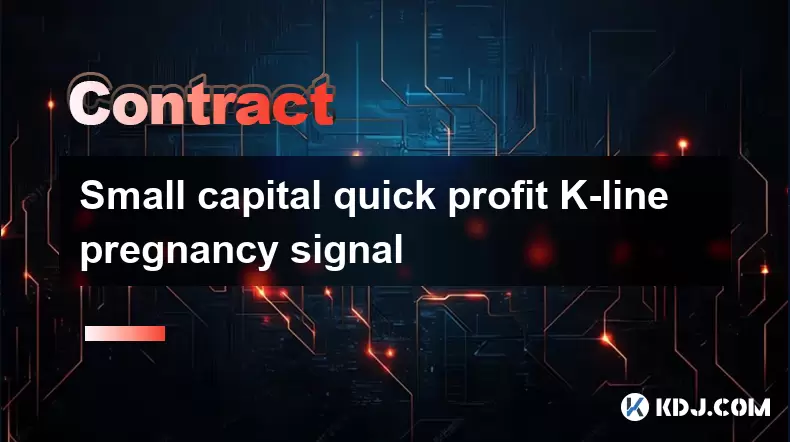
Small capital quick profit K-line pregnancy signal
Jun 01,2025 at 06:07am
Introduction to K-line Pregnancy SignalThe K-line pregnancy signal is a popular technical analysis tool used by cryptocurrency traders to identify potential quick profit opportunities, especially with small capital. This signal is derived from the concept of candlestick patterns, specifically focusing on the formation that resembles a pregnancy. When tr...
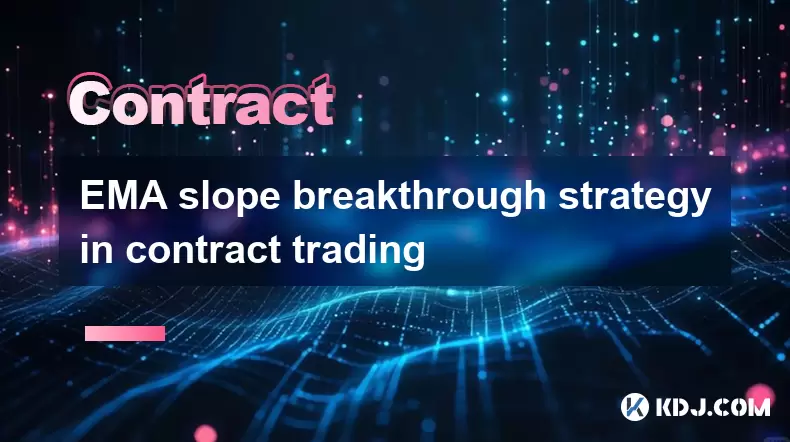
EMA slope breakthrough strategy in contract trading
Jun 03,2025 at 04:56pm
The EMA (Exponential Moving Average) slope breakthrough strategy is a popular technical analysis method used by traders in the cryptocurrency market, particularly in contract trading. This strategy leverages the sensitivity of the EMA to price changes, making it a useful tool for identifying potential entry and exit points in the market. In this article...
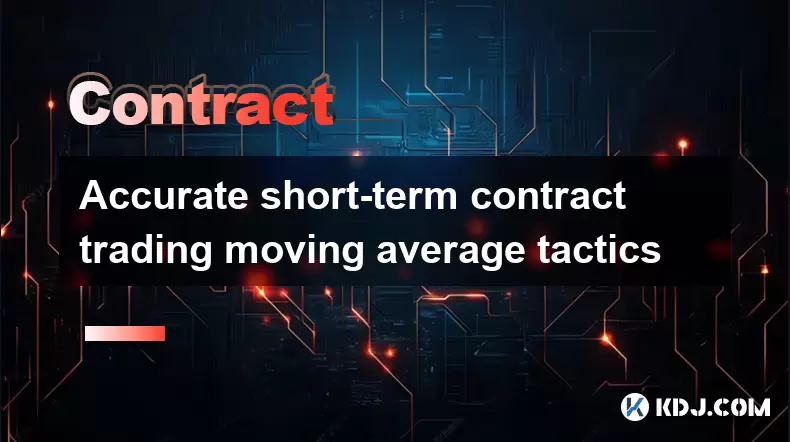
Accurate short-term contract trading moving average tactics
Jun 01,2025 at 12:42pm
In the world of cryptocurrency, short-term contract trading is a popular strategy among traders looking to capitalize on the volatile nature of digital assets. One of the key tools used in this approach is the moving average (MA). This article delves into the tactics of using moving averages for short-term contract trading, providing a detailed guide to...
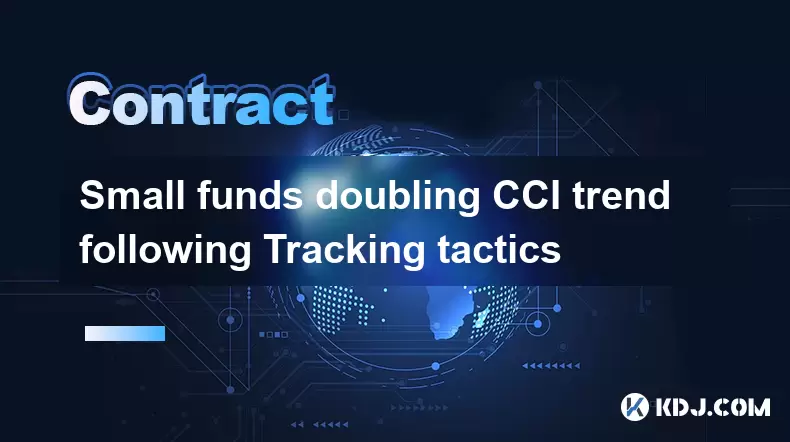
Small funds doubling CCI trend following Tracking tactics
Jun 03,2025 at 07:15pm
Understanding the CCI IndicatorThe Commodity Channel Index (CCI) is a versatile indicator used in technical analysis to help traders identify cyclical trends in the price of an asset. Developed by Donald Lambert, the CCI measures the difference between an asset's price change and its average price change. High values of the CCI indicate that prices are ...
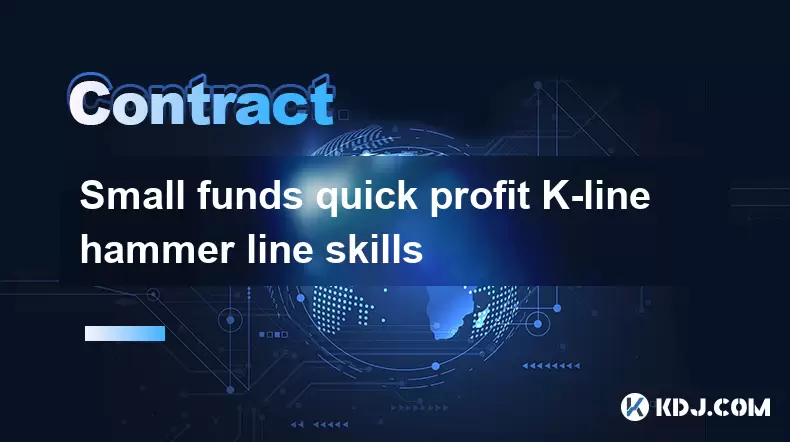
Small funds quick profit K-line hammer line skills
Jun 02,2025 at 06:28am
Introduction to K-Line Hammer LineThe K-line hammer line is a crucial pattern in technical analysis that traders often use to identify potential reversal points in the market. This pattern is especially significant for small funds looking to make quick profits. The hammer line is characterized by a small body at the top of the candle and a long lower wi...
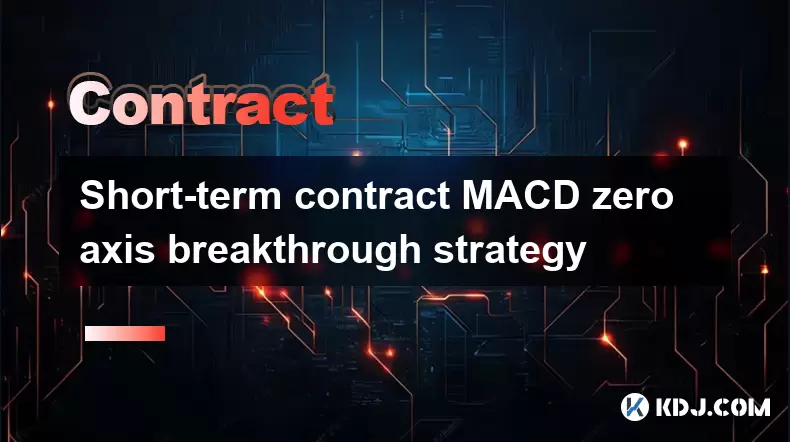
Short-term contract MACD zero axis breakthrough strategy
Jun 03,2025 at 08:28am
In the fast-paced world of cryptocurrency trading, employing effective strategies can significantly enhance your chances of success. One such strategy that has gained popularity among traders is the Short-term contract MACD zero axis breakthrough strategy. This approach leverages the Moving Average Convergence Divergence (MACD) indicator to identify pot...

Small capital quick profit K-line pregnancy signal
Jun 01,2025 at 06:07am
Introduction to K-line Pregnancy SignalThe K-line pregnancy signal is a popular technical analysis tool used by cryptocurrency traders to identify potential quick profit opportunities, especially with small capital. This signal is derived from the concept of candlestick patterns, specifically focusing on the formation that resembles a pregnancy. When tr...

EMA slope breakthrough strategy in contract trading
Jun 03,2025 at 04:56pm
The EMA (Exponential Moving Average) slope breakthrough strategy is a popular technical analysis method used by traders in the cryptocurrency market, particularly in contract trading. This strategy leverages the sensitivity of the EMA to price changes, making it a useful tool for identifying potential entry and exit points in the market. In this article...

Accurate short-term contract trading moving average tactics
Jun 01,2025 at 12:42pm
In the world of cryptocurrency, short-term contract trading is a popular strategy among traders looking to capitalize on the volatile nature of digital assets. One of the key tools used in this approach is the moving average (MA). This article delves into the tactics of using moving averages for short-term contract trading, providing a detailed guide to...

Small funds doubling CCI trend following Tracking tactics
Jun 03,2025 at 07:15pm
Understanding the CCI IndicatorThe Commodity Channel Index (CCI) is a versatile indicator used in technical analysis to help traders identify cyclical trends in the price of an asset. Developed by Donald Lambert, the CCI measures the difference between an asset's price change and its average price change. High values of the CCI indicate that prices are ...

Small funds quick profit K-line hammer line skills
Jun 02,2025 at 06:28am
Introduction to K-Line Hammer LineThe K-line hammer line is a crucial pattern in technical analysis that traders often use to identify potential reversal points in the market. This pattern is especially significant for small funds looking to make quick profits. The hammer line is characterized by a small body at the top of the candle and a long lower wi...

Short-term contract MACD zero axis breakthrough strategy
Jun 03,2025 at 08:28am
In the fast-paced world of cryptocurrency trading, employing effective strategies can significantly enhance your chances of success. One such strategy that has gained popularity among traders is the Short-term contract MACD zero axis breakthrough strategy. This approach leverages the Moving Average Convergence Divergence (MACD) indicator to identify pot...
See all articles


























































